Wrapping up the viewers
Interactive television is rewriting the way brands engage with viewers. What new creative strategies are being demanded of marketeers, asks Karen Dempsey
Major fmcg companies including Unilever and Procter & Gamble know they cannot afford to ignore interactive advertising, but they're still scratching their heads wondering what to do with it.
Mention interactive advertising and they all nod and agree that they should be aiming for a situation "where consumers can talk back to the content provider in real time" and where they can "communicate with consumers on a one-to-one basis".
In the traditional media world they stride confidently through different channels, but in the interactive world they are like toddlers taking their first tottering steps and the rest of the world is watching.
Their first attempts at using interactive TV technology have been, at their own admission, rather crude and clunky.
Anna Creed, Persil consumer activation manager at Unilever, admits its first attempts at interactivity were nothing more than "a glorified teletext". Consumers answering questions by phone made up the interactive element not exactly the stuff interactive dreams are made of.
Creed says: "Where traditional advertising is concerned Unilever has so much knowledge. But this is so new to us and at the moment the learning process of how it works and what we want from it is taking up a hell of a lot of time."
It's also demanding a hell of a lot of imagination.
If fmcg brands are not careful they could lose out to brands and products with more interactive sex appeal. How do you convince consumers to interact with a shampoo or a washing powder when they could be talking to a Donald Duck in Disney Land or, in another few years' time, driving a virtual Ferrari?
The fear is that interactive media could prove a bit of a dampener on fmcg brands' advertising fireworks.Yet the first big grocery brands out of the traps seem to be experiencing something of a honeymoon period in terms of interest after all there is little competition to speak of.
Some 41,000 people interacted with the Persil Non Bio Truly Sensitive Show which ran for three weeks in May on Open, the interactive platform for Sky digital subscribers. Rather than bore consumers to tears about how gentle the product is on their skin, the programme sought to draw consumers in and entertain them.
Created by new media agency Modem Media, the programme was accessed through a button displayed during conventional commercial breaks that consumers clicked and which took them to what is called a "microsite". There, viewers were greeted by a host who took them through a series of questions about boyfriends, underwear and beauty regimes. They were then awarded points and could win prizes including a trip to a health spa, a selection of Elizabeth Arden products and a year's supply of Persil Non Bio. The idea was to establish a dialogue, not just shove a sales message down consumers' throats.
As consumers increasingly expect personalised treatment, interactive TV gives advertisers a way to achieve that in a cost effective way. Take the exposure of food interest programmes on TV, add the functionality of the internet, and that's the future of fmcg on digital, advocates argue.
And the sheer numbers that will be using interactive TV in the next few years mean ploughing serious money into developing interactive TV strategies will reap reward. Advertising creatives are convinced digital TV will have to play a fundamental role in marketing campaigns. Within three years some estimates put interactive TV advertising at more than $5bn globally.
Interactive TV will overtake the PC for e-commerce in many sectors, particularly fmcg and retailing. By the end of this year estimates for online households via the PC to the internet are 5.5 million, compared with TV projection of 5.3 million. By the end of 2002 Quantum New Media Services predicts digital TV will reach 11.7 million homes while home usage of PC internet is estimated at 8.8 million.
So, with these potential dividends, how does a brand draw the consumer in via interactive media? And where does the real potential lie? For Michael Smit, account manager at Modem Media, getting it right is about about an execution that is experience, not product related.
He says: "People don't want to be talked through the product description. They want to be engaged by the content and think what the brand is about while they are being entertained."
And getting it right is more than worthwhile, Creed believes. "With traditional media you sow your advertising seed and you don't know if it is going to fall on fallow or barren ground. With interactive media you can direct your message to the right consumer and get a response from them too, with is a good thing for the brand and a good thing for consumers."
Video on demand via digital TV currently on trial in a number of areas gives further opportunities to collect lifestyle data and insert personalised advertising. Unlike the nationwide uniformity of the internet, and regional spread of traditional broadcasters, interactive TV can be city, town and even household specific.
Treating consumers as individuals rather than as a mass group and establishing true one-to-one contact is what direct marketers have been trying to achieve for years and it is what makes interactive TV so revolutionary.
But while personalising your communication increases its power, it also means turning traditional thinking on its head. Interactive advertising is shifting control from the brand to the consumer. The challenge for the brand is how do I get the consumer to want my communication when previously the consumer had no choice.
Rahul Chakkara, manager, global iVentures at P&G, says: "The challenge to the marketeer is not about telling the story as in traditional media in an interactive world you have to entice consumers to take part in the story."
The way to entice customers in is to reward them with something they value. P&G's first stab at interactive advertising was with haircare brand Pantene. Together with agency Grey Interactive it ran a five week campaign on the Cable & Wireless digital service.
There were 60,000 visits to the Pantene microsite as users clicked through from a banner style ad. Of these around half completed the questionnaire and were sent trial sachets of the product and personalised hair care advice. And P&G willingly collected the data on its customers.
Chakkara says: "The consumer decides if she is going to watch the ad, how much and which part she will watch, and she'll demand more from what she receives.
"Consumers are interested and willing to interact with your brand if you give them value. Egocentric brands see interactivity as a form of getting consumer data but you can't afford to manipulate the consumer as they can see through that and you'll soon break their trust with the brand in an interactive world."
But there are also pitfalls in being too entertainment focused. Watching TV can make consumers fall into lazy mode this is, after all, what they've been used to. It's a question of balancing the push with the pull.
Chris Harrison, md of Grey Interactive TV, says: "Brands that use the entertaining strategy should bear in mind that people remember the joke rather than the brand and a joke doesn't necessarily change their propensity to buy.
"You have to provoke and motivate a consumer to press their remote control button but we can't let them sit back and be entertained as they are used to being passive consumers of TV entertainment," he adds.
The power of TV, says Quantum New Media Services managing director Paul Longhurst, is in its push promotion factor. He explains: "This means it can be used to persuade consumers to take action and do something they had not considered when they started viewing."
The Van den Bergh Foods ad for Chicken Tonight persuaded thousands of viewers to click on the site and check recipes and get free samples which never crossed their mind until they turned on the TV set.
And Longhurst highlights how Domino's Pizza has used interactive TV for sales promotion to create the necessary impulse purchase at the right time rather than relying on local door drops.
Domino's has negotiated a deal with Open where within the film and entertainment area it runs competitions to win free cinema tickets. It also creates TV tie-in promotions that feature in interactive ads. So it could run, say, a Pepperoni Passion for a quiet night in for two, or it could say buy a pizza meal and get a pay per view movie free'.
To date, says Longhurst, over 50% of Open TV pizza orders are new customers and the average order value is running at 20% higher than telephone-generated business. And as the opportunities for consumption increase, the opportunity for tie-in brands ice cream, alcohol, soft drinks, condoms etc is huge.
Longhurst says that in the future "your interactive TV will know what you are watching and which shows you prefer to watch over the course of the average week. It will know what products you buy because you've been incentivised to tell it. It knows other areas that affect your lifestyle because every time you used the TV to surf the net it stored data on the types of sites you visited, matched this with the TV programmes you like to watch and built up a picture of your interests. It has a smart card slot, a Mondex card slot and a loyalty card slot all of which you can use during purchasing periods on the TV."
Marcus Vinton, creative director at Ogily Interactive, says that what all this boils down to is a future that is "me-commerce". Everything wil be geared to what individual consumers want.
The Chicken Tonight campaign that ran on Open in March was a substantial part of the brand's £3.5m push earlier this year. The commercial created by Ogilvy Interactive lead on to Creative Kitchen, a Van den Bergh Foods portal featuring a portfolio of sub brands. Under the Infotainment' heading, it offered recipes and meal ideas with a databank utilising different brands. It could eventually include loyalty schemes. Every viewer who clicked through and entered their Open code received a coupon for a free product.
And as the technology becomes more established in the home, the opportunities for interacting with the consumer will become ever greater.
"We'll move from band width to brand width," says Vinton. "Take the proliferation of food programmes on TV, add the functionality of the web, and that's the future of fmcg on digital."
It doesn't stop there either. Vinton's long-term vision involves building sitcoms round brands. And he will harness WAP technology on mobile phones when you go shopping, barcoded products on shelves can transmit recipe ideas to the phone and the customer just has to scroll down for ideas for meals and snacks and it will all be linked into the information gathered from the TV.
Speed is of the essence in the interactive TV revolution. Longhurst concludes: "If you are a mass market brand and are thinking of implementing promotions on the internet, think again and think fast. If you have no plans for interactive TV start to lose sleep.
"Your competition is going to lose you at the starting post." n
{{COVER FEATURE }}
Close menu
- Home
- Retail & Wholesale
-
Products & Suppliers
- Back to parent navigation item
- Products & Suppliers
-
Product Categories:
- Back to parent navigation item
- Product Categories:
- Alcoholic drinks
- Bakery
- Cereals & breakfast
- Cheese
- Chicken & poultry
- Chocolate
- Confectionery
- Crisps, nuts & snacks
- Dairy
- Fish
- Fresh produce
- Frozen
- Household
- Meat
- Own Label
- Sauces & condiments
- Seasonal
- Soft drinks
- Vaping
- Vegan & plant-based
- World foods
- Suppliers
- People
- Reports & Data
-
Topics A-Z
- Back to parent navigation item
- Topics A-Z
-
Popular topics:
- Back to parent navigation item
- Popular topics:
- Cost of living crisis
- Crime
- Deposit Return Schemes
- Finance
- Government & Regulation
- Health
- Inflation
- Loyalty
- Marketing
- Mergers & Acquisitions
- New Product Development
- Sourcing
- Supply chain
- Sustainability & environment
- Technology
- Ultra Processed Foods
- Vaping
- A-Z all topics
- Content by type:
- Events
- Ask iA (beta)
- Subscribe now
Sign in to comment on this article
Not logged in before? Register for FREE guest access today.
You will be able to:
- Read more stories
- Receive daily newsletters
- Comment on stories
Advert

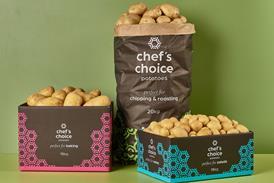


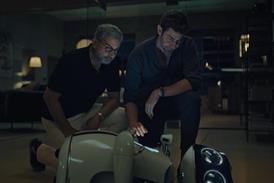
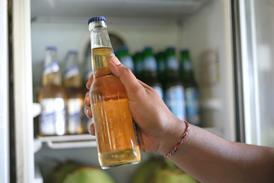




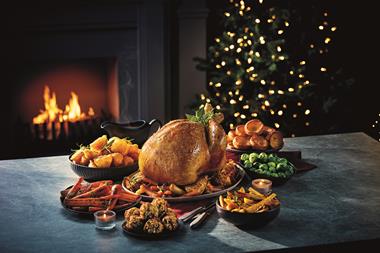



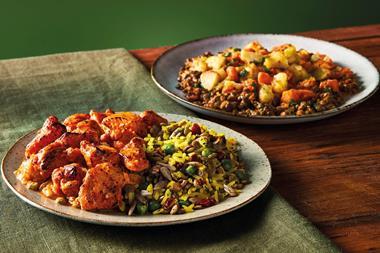
No comments yet